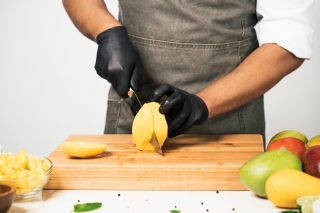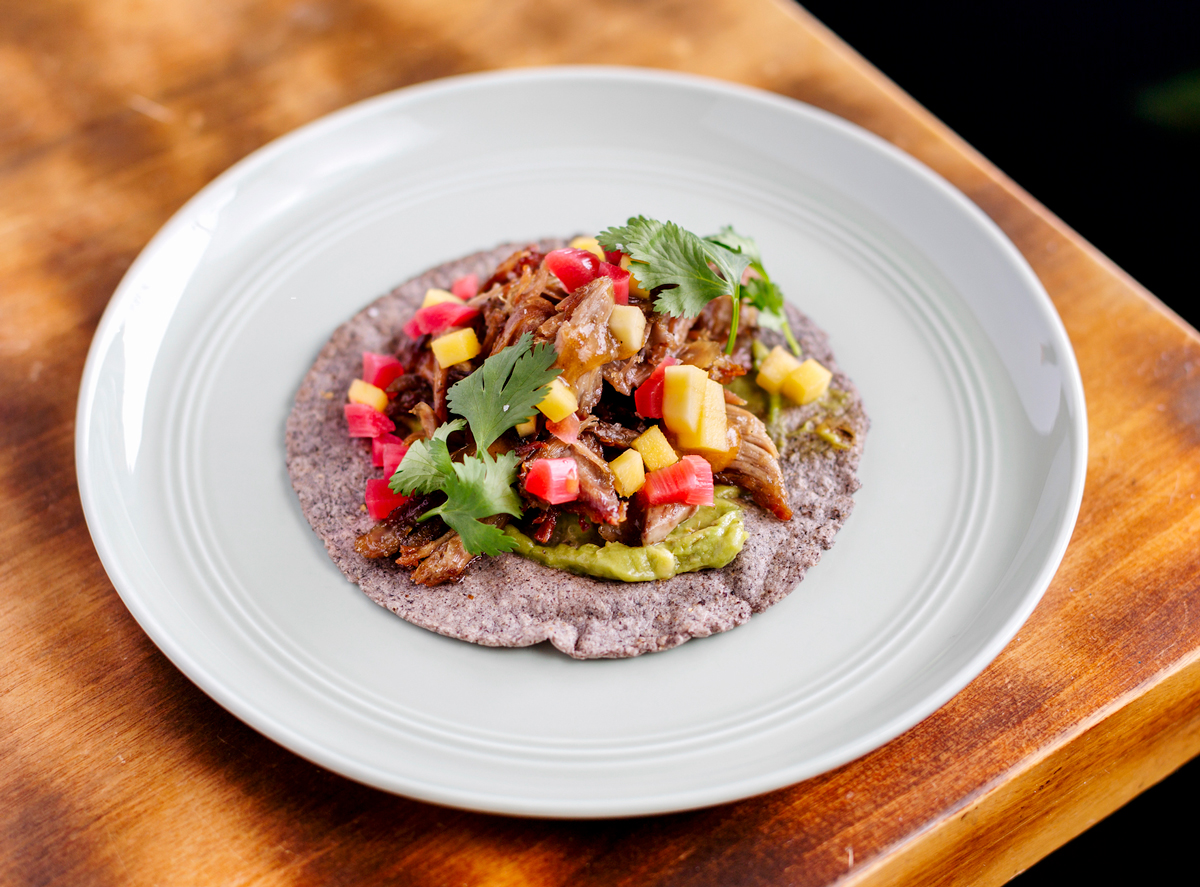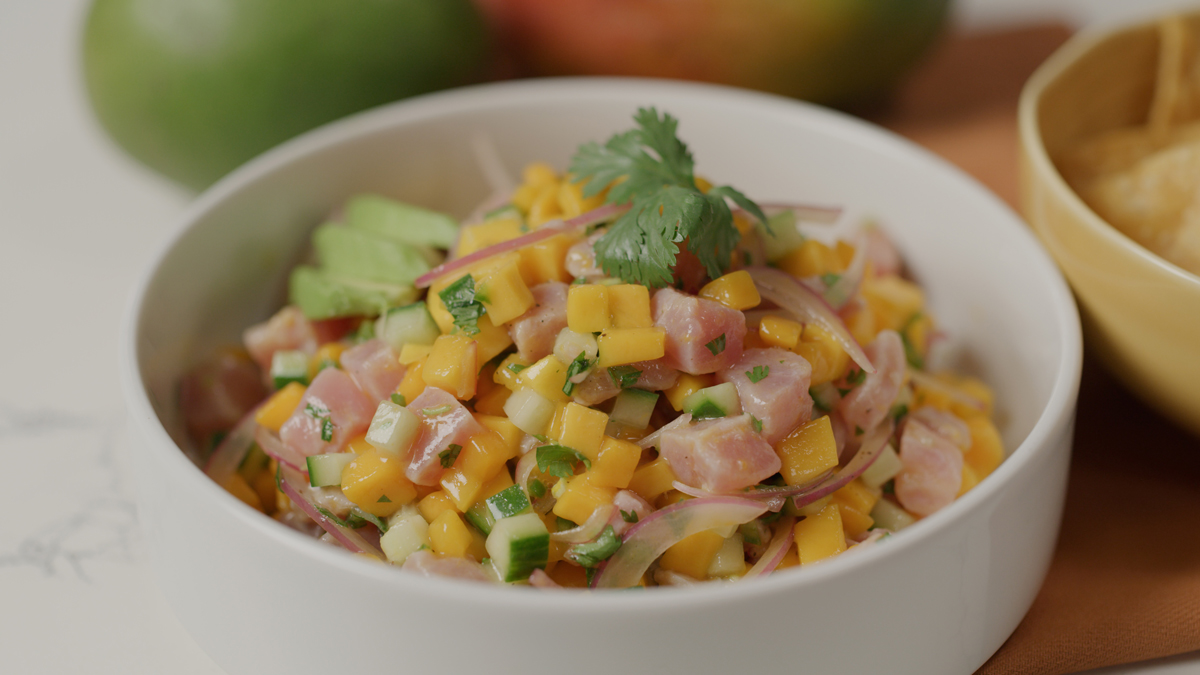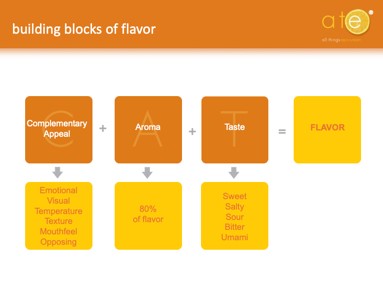
A Culinary Deep Dive into the King of Fruits
30 May 2023Spark creativity with fresh mangos by linking education with trend and recipe innovation.
By Chef Rob Corliss, All Things Epicurean
Feedback & comments: This email address is being protected from spambots. You need JavaScript enabled to view it.
The mango is known worldwide as the “King of Fruits.” The title was bestowed to this pitted fruit for its superfood-nutritional value, vast cultivation with more than 100 mango-producing countries spread throughout the world, and enormous consumer popularity. Chefs add their nod of agreement to this lofty status when they consider mango’s versatility and flavorsome opportunities in culinary applications. Even though the royal fruit was introduced more than 5,000 years ago, its place in today’s culinary scene as an in-demand, on-trend and multifunctional ingredient is a crowning achievement.
Let’s expand on several key educational areas: understanding the five ripeness stages, learning about on-trend innovations occurring right now in foodservice, and teaching culinary students how to create the building blocks of flavor utilizing fresh mango. Utilizing the humble king – fresh mangos, together we can spark culinary creativity in the classroom by linking trends and recipe innovation.
Mangos five ripeness stages
Mangos grow across a ripeness continuum. As the mango matures, the internal flesh changes color beginning at the seed and moves to the outer skin. Additionally, the mango will be firm and hard to touch at the beginning and become soft and juicy as it ages. All varieties will progress through these five ripeness stages. Click here to view the PDF maturity chart.
Green (ripeness stages 1-2 and the beginning of stage 3)
Green mango is ideal for preparations where its crispness provides integral texture, and its faint aroma and tart flavor complements savory, spicy and sweet flavors.
- Mango ideas in action – beginning stages
Green mango is commonly found in salads (matchsticks, spiralized, ribbons, shavings), slaw (matchsticks, spiralized, grated) or pickled preparations (wedges, matchsticks, spiralized, ribbons, shavings). Moving green mango into other menu preparations extends the perception of green mango and creates more flavor opportunities within menu innovation.
As an example: cooks can juice, puree or grate green mango and use its tartness in place of tamarind or vinegar in chutney, jam, or curry recipes; or add a finishing touch of green mango matchsticks to pozole; or include minced green mango in raita imparting fruity complexity.
Ripe (ripeness stage 4)
Ripe mango is ideal for preparations where its velvety softness counters crunchy textures or amplifies softness; and its delicate floral aroma and sweet-slightly sour flavor complements savory, sour, or spicy flavors.
- Mango ideas in action – stage 4
Ripe mango makes curries, ragouts and stews taste buttery. Use a combination of mango puree and chopped mango to accentuate this buttery mouthfeel. Ripe mango can also be used to temper and balance spices in almost any dish. Mango allows spices and heat to shine, like jerk, baharat or togarashi, while still being approachable. Cold-smoked or char-grilled ripe mango wedges make an intriguing salad, sandwich, or taco component.
Very ripe/juicy (ripeness stage 5)
Very ripe mango is ideal for preparations where its juicy, velvety soft smoothness provides contrasting or heightened texture, and its aromatic and very sweet flavor complement savory, sour, sweet, or spicy flavors.
- Mango ideas in action – stage 5
Create a menu call-out name – like juicy – for very ripe mango. Very ripe mango adds a sweet complexity to: soy-based accoutrements; Mexican crema; citrus curd and sauces like mole and barbeque; and an array of Chinese-American mainstays such as orange chicken, Kung Pao and General Tso’s. It can also be used as a natural enzymatic tenderizer on meats or paired with acidic tenderizers in ceviche.
Ripeness versus variety
There are hundreds of mango varieties but only six varieties are commonly available in the American market throughout the year. They include Tommy Atkins, Kent, Haden, Keitt, Francis, and Ataulfo (honey). Each variety has its distinguishing flavor, aromatic and texture; especially within the five ripeness stages.
Immersing young chefs in all the mango varieties may be beneficial, however understanding the five ripeness stages and applications within each stage is paramount for flavor development. The stages can be applied to any mango variety. Focus on ripeness and let that drive any culinary techniques utilized, versus studying the plethora of varieties. Doing so expands recipe possibilities and provides cooks with an easy-to-understand and actionable way to innovate with fresh mango.
To help students engage with mangos and understand their connections to culture, sustainability and seasonality, click here to watch several origin videos told by people who grow and cook with mangos.
Bold flavor trends and audiences
Today’s foodservice chefs need to evolve and connect with patrons, especially young adults like Gen Z and Millennials. One way is through perpetual recipe and menu innovation aligning with contemporary palates and 24/7 eating occasions. Ingredients aligning with trends, serving as a bridge for new and bolder flavor experiences, will strongly resonate with both the consumers who seek food adventure and the culinarians who wish to bring those flavors to life. Fresh mango can quench this sense of discovery as it is both approachable and exotic.
Here are trends in four areas sweeping the foodservice sector:
Consumer trends
- Gen Z focus
- Experiential dining
- Plant-curious
Foodservice industry trends
- Quality first approach
- Storytelling and deep dives
- Craveable health-immunity
Menu trends
- Flavorful wellness-approachable indulgence
- Breakfast all-day
- Differentiated familiar
Flavor trends
- Global flavors and street foods
- Latin, Southeast Asia, Middle Eastern/Eastern Med
- Flavorful heat plus sweet and spicy
Building Blocks of Flavor
The Building Blocks of Flavor chart provides a succinct opportunity for culinary instructors to teach students about the complexity of flavor development. Using the blocks of complementary appeal, aroma and taste (CAT), the graph illustrates how each block works in harmony to become the foundation of flavor.

This is where the versatility and character of fresh mango shines brightly. Mango easily fits within several flavor trends as demonstrated by its ability to complement and contrast with texture and color, add to an application’s aroma, and cover many tastes. Even though mango fits within certain global cuisines or tropical dishes, instructors can branch out and teach the versatility of fresh mangos in regional American dishes or current top trending cuisines such as Latin, Asian and Middle Eastern cuisine.
Combing flavor building blocks with trends into actionable strategies:
Building complementary appeal - keeping the ripeness characteristics in mind
- Tell a compelling story with fresh mango, as fruit-forward flavors can conjure strong emotional connections and delightful taste surprises.
- Fresh mango complements light, earthy, pungent, and bold plant-based flavors – with its soft aromatics and natural sweetness.
- Fresh mango complements lean cuts of meat by adding sophisticated natural sweetness or vibrant pickled tartness.
- Fresh mango complements richer, fattier cuts of meat by matching the boldness and cutting through with soothing natural sweetness or tropical tartness.
- Fresh mango complements eggs and dairy – with delicate natural sweetness.
- Fresh mango excels in both cold (whipped butter, pickling, salsa, chutney, slaws, salad dressings, drinks, dessert) and hot (sauces, soup, glazes, braises, stews) preparations.
- The five ripeness stages of fresh mango provide an array of cuts to utilize and varying degrees of texture to accentuate recipes and contrast other shapes for higher visual appeal. Experiment utilizing diced, sliced, wedges, matchsticks, ribbons/shavings, spirals, mashed, and purees.
- Fresh mango ripeness and cuts can be further accentuated with char grilling, brûléed, sous vide, vacuum compressing, poaching, and dehydrating.
Building applications with aroma
- Ripe and very ripe fresh mango provides a high aromatic sensory appeal. Double down on aroma/taste, pairing fresh mango with other mouthwatering aromatic ingredients or applying aromatic cooking techniques.
Building taste
- Fresh mango integrates with the five basic tastes, especially the current sweet and spicey trend. Use mango to add sweetness to savory or spicy dishes, add complexity to tart sourness, temper bitterness, and elevate umami.
As lifestyles and consumer eating habits evolve, interpreting global cuisines with an engaging fresh perspective is crucial. Mango plays an integral role here, becoming interwoven into all aspects of culinary techniques and flavor development. Fresh mango is primed for deeper flavor and innovation in the culinary classroom.
 Rob Corliss is a three-time James Beard House guest chef with more than 30 years of experience that includes running world-class hotels, launching new concepts, working in top marketing agencies and, currently, owning a consulting company, All Thing Epicurean, ATE. ATE is focused on flavor, menu and restaurant innovation. Based in Nixa, Mo., he has an engineering passion for food and is dedicated to connecting people to their food, environment and wellness. He can be contacted at: This email address is being protected from spambots. You need JavaScript enabled to view it..
Rob Corliss is a three-time James Beard House guest chef with more than 30 years of experience that includes running world-class hotels, launching new concepts, working in top marketing agencies and, currently, owning a consulting company, All Thing Epicurean, ATE. ATE is focused on flavor, menu and restaurant innovation. Based in Nixa, Mo., he has an engineering passion for food and is dedicated to connecting people to their food, environment and wellness. He can be contacted at: This email address is being protected from spambots. You need JavaScript enabled to view it..
Photos courtesy of the National Mango Board, The Culinary Institute of America, STARCHEFS and All Things Epicurean.
